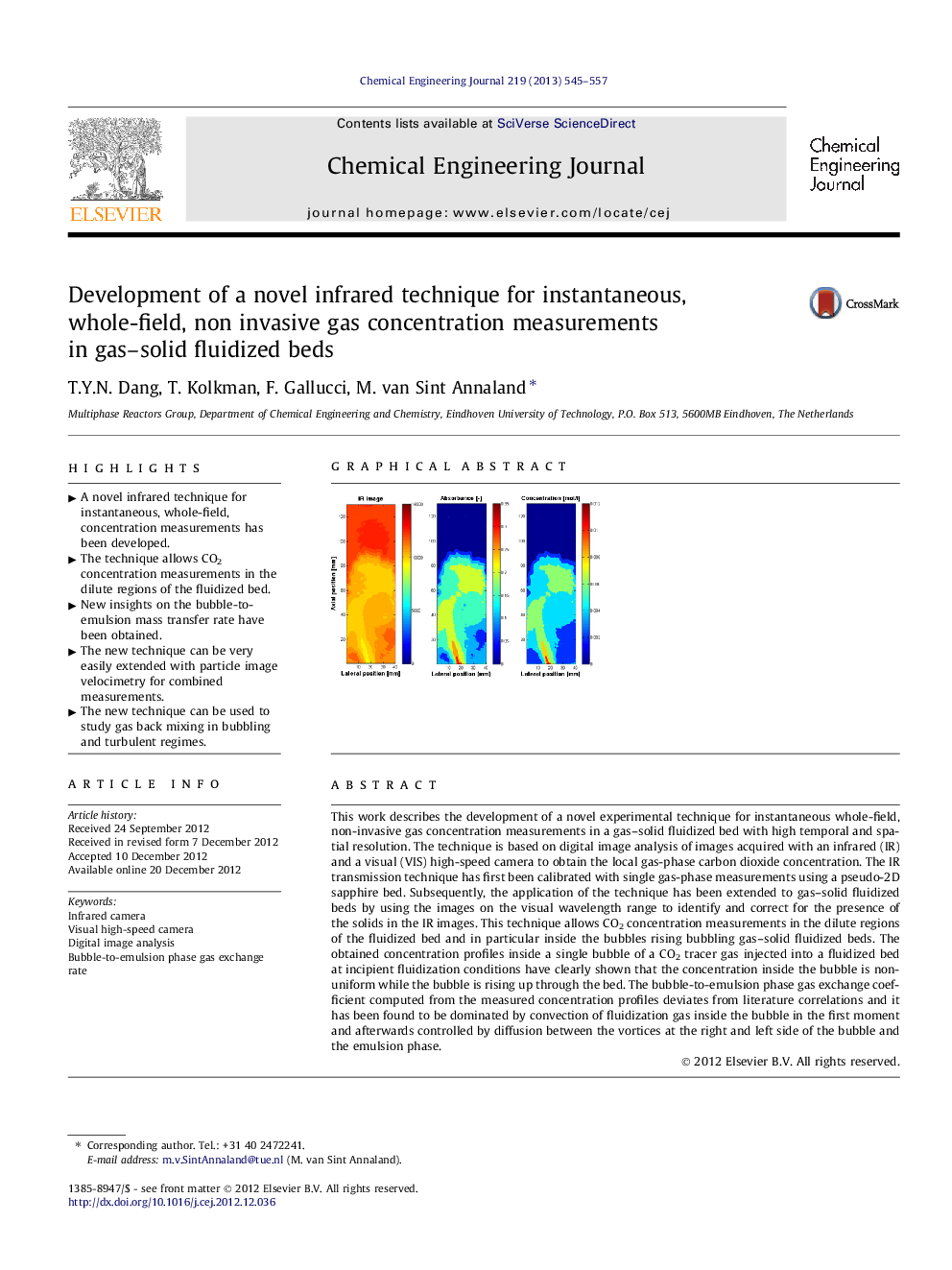| Article ID | Journal | Published Year | Pages | File Type |
|---|---|---|---|---|
| 148922 | Chemical Engineering Journal | 2013 | 13 Pages |
This work describes the development of a novel experimental technique for instantaneous whole-field, non-invasive gas concentration measurements in a gas–solid fluidized bed with high temporal and spatial resolution. The technique is based on digital image analysis of images acquired with an infrared (IR) and a visual (VIS) high-speed camera to obtain the local gas-phase carbon dioxide concentration. The IR transmission technique has first been calibrated with single gas-phase measurements using a pseudo-2D sapphire bed. Subsequently, the application of the technique has been extended to gas–solid fluidized beds by using the images on the visual wavelength range to identify and correct for the presence of the solids in the IR images. This technique allows CO2 concentration measurements in the dilute regions of the fluidized bed and in particular inside the bubbles rising bubbling gas–solid fluidized beds. The obtained concentration profiles inside a single bubble of a CO2 tracer gas injected into a fluidized bed at incipient fluidization conditions have clearly shown that the concentration inside the bubble is non-uniform while the bubble is rising up through the bed. The bubble-to-emulsion phase gas exchange coefficient computed from the measured concentration profiles deviates from literature correlations and it has been found to be dominated by convection of fluidization gas inside the bubble in the first moment and afterwards controlled by diffusion between the vortices at the right and left side of the bubble and the emulsion phase.
Graphical abstractFigure optionsDownload full-size imageDownload as PowerPoint slideHighlights► A novel infrared technique for instantaneous, whole-field, concentration measurements has been developed. ► The technique allows CO2 concentration measurements in the dilute regions of the fluidized bed. ► New insights on the bubble-to-emulsion mass transfer rate have been obtained. ► The new technique can be very easily extended with particle image velocimetry for combined measurements. ► The new technique can be used to study gas back mixing in bubbling and turbulent regimes.
